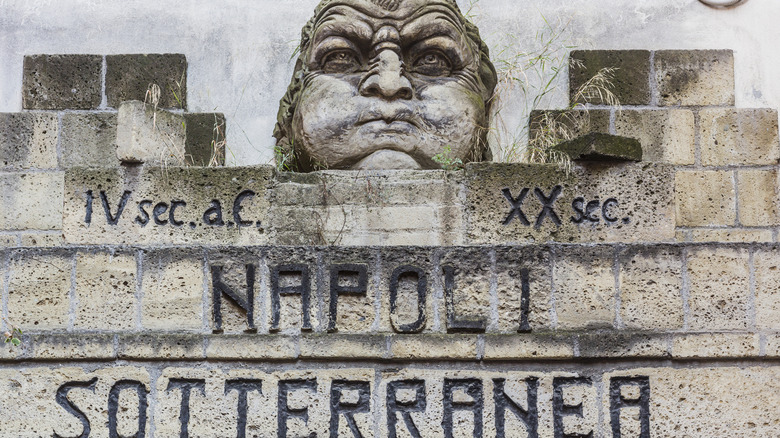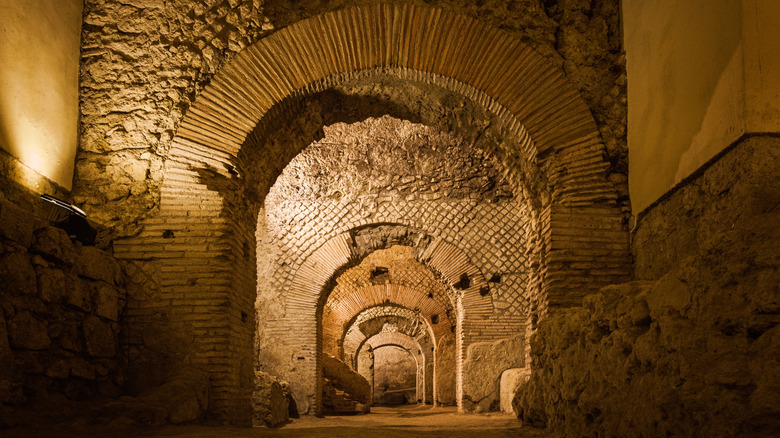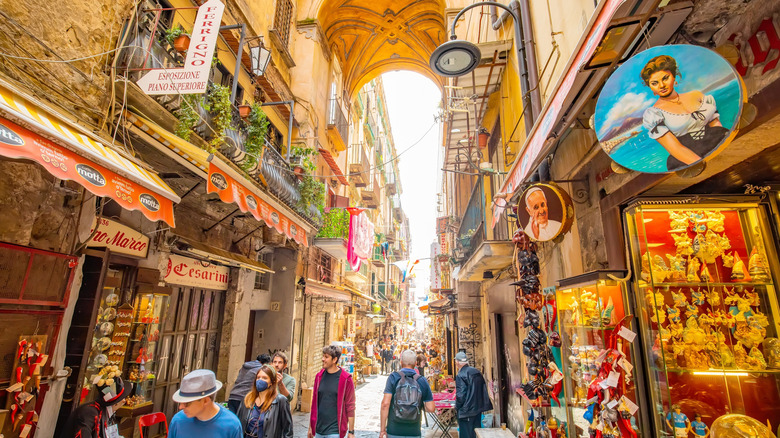Explore The Wildly Impressive History That Hides Directly Underneath Naples
We may receive a commission on purchases made from links.
A trip to Italy means inevitably delving into the country's remarkable past even if you're not a history buff. Everywhere you go, ornate architecture, art, and even natural topography from various historical periods form a constant canvas of interesting sights. Sometimes, to see how deep Italy's history (literally) goes, you must go underground. Naples, one of the country's many iconic destinations, features hundreds of kilometers of underground passages that were originally built by the Greeks over 2,000 years ago. Since then, they've been molded and repurposed according to the needs of various empires, and now form an intriguing cross-section of the region's varied history. A tour through the Naples Underground or Napoli Sotterranea takes you far below the city, through ancient theatres, aqueducts, and even air raid shelters.
Contrary to popular belief, Naples isn't as dirty and dangerous as the internet suggests. Whether it's for some of the world's best pizza, the sweeping views, or the bustling art scene, this ancient city is going to be on most Italy travel lists. The Naples Underground's tunnels are a great reprieve from the city's bustle. Of course, the tour is also popular, so it's best to book your tickets for it in advance. One of the many travel hacks experienced tourists use in Italy is to show up early in the morning for prominent tours to avoid the daytime rush.
A guide to exploring Naples Underground
The Naples Underground tour takes you about 130 feet (40 meters) under the city's bustling surface to a network of tunnels first constructed by the Greeks in the third century B.C. As you make your way through the narrow passages, you'll also get to see signs of several major historical periods that came after. The Romans used these tunnels to help build their legendary network of aqueducts, many of which still function today. Parts of the underground tunnels were later also used as air raid shelters.
A particularly interesting, albeit modern attraction in the tunnels is the Underground Garden. Part of an investigative botanical program, the experimental garden has several vegetable varieties and thrives in what is a very uncommon environment for growing plants. There is also the street-level house, which opens up to an ancient underground theater that was used by the Roman Emperor Nero.
The Naples Underground tour involves some gentle slopes and several steps to get to different levels. Thus, plan your visit accordingly, wearing comfortable footwear and remembering that you're in for a bit of a walk. The temperature underground is also several degrees cooler than outdoors. The tour guides are knowledgeable and offer a lot of insight into the tunnels' past. Since tours are offered in multiple languages, make sure to pick the right guide. There's also a convenient skip-the-line ticket on Viator, which allows you to beat some of the crowds. However, since most of the tour is in confined spaces and it can get a little crowded, people can get claustrophobic. The tour lasts about 90 minutes and includes optional sections that are only lit by candlelight.
Naples Underground is in the city's historic center
The Naples Underground is located in the city's historic center, a UNESCO World Heritage site. The expansive old town is one of the largest in Europe and is replete with churches and historic monuments that go back to the ancient Greeks. The underground tunnels were initially used as quarries to obtain stone for the Greeks to build their new city or "Neapolis." These were then expanded to their present scale of almost 300 miles and used extensively by the Romans, and then during World War II as bomb shelters and to store military vehicles and supplies.
While there's a lot of history to explore in the country, including Italy's oldest city, which is an underrated ancient gem, Naples Underground offers a unique experience of exploring parallel histories both above ground and below. At the end of the tour, you are still in the heart of the old city and are therefore in the vicinity of many of Naples' best-known tourist sights and eateries. Head to Sorbillo, a legendary pizzeria in the center of Naples, but be prepared for a bit of a wait because of how popular the place is. Famous churches like the Basilica San Francesco da Paola and the Naples Cathedral are also a short walk away, as are the National Archaeological Museum and the 17th-century Royal Palace of the Bourbon dynasty.


